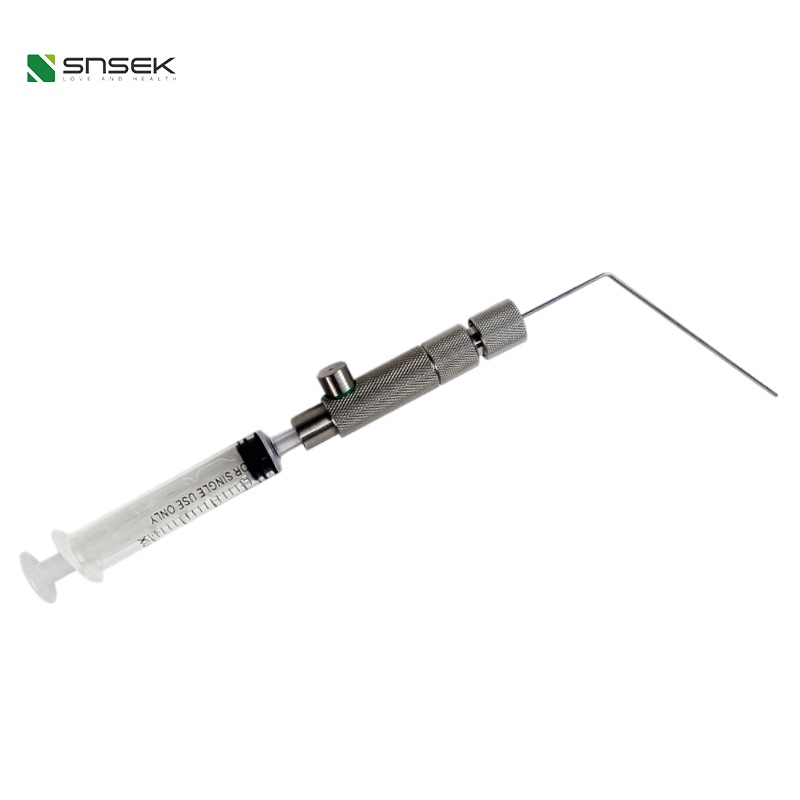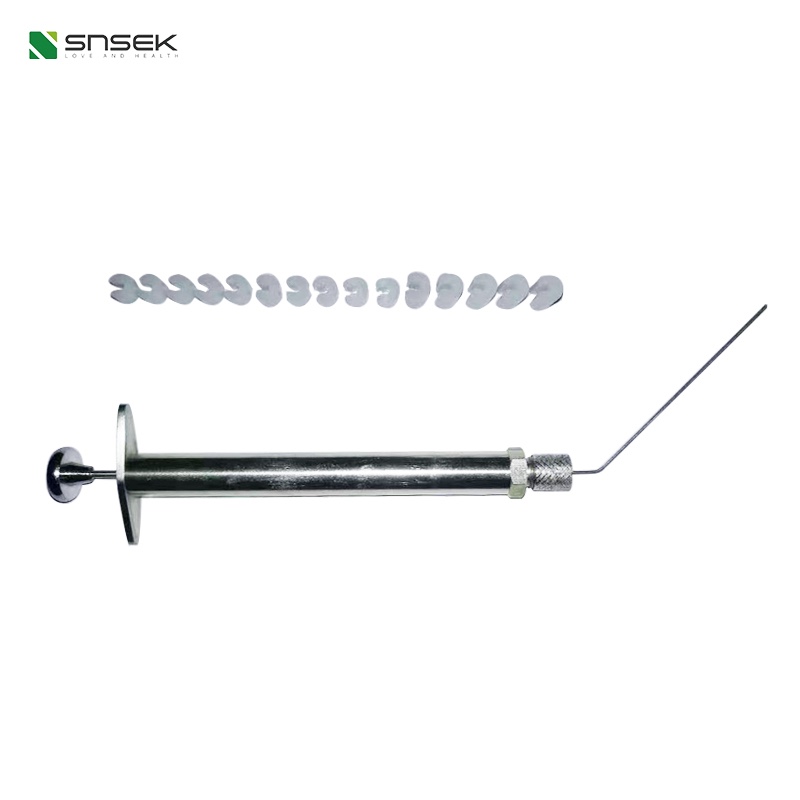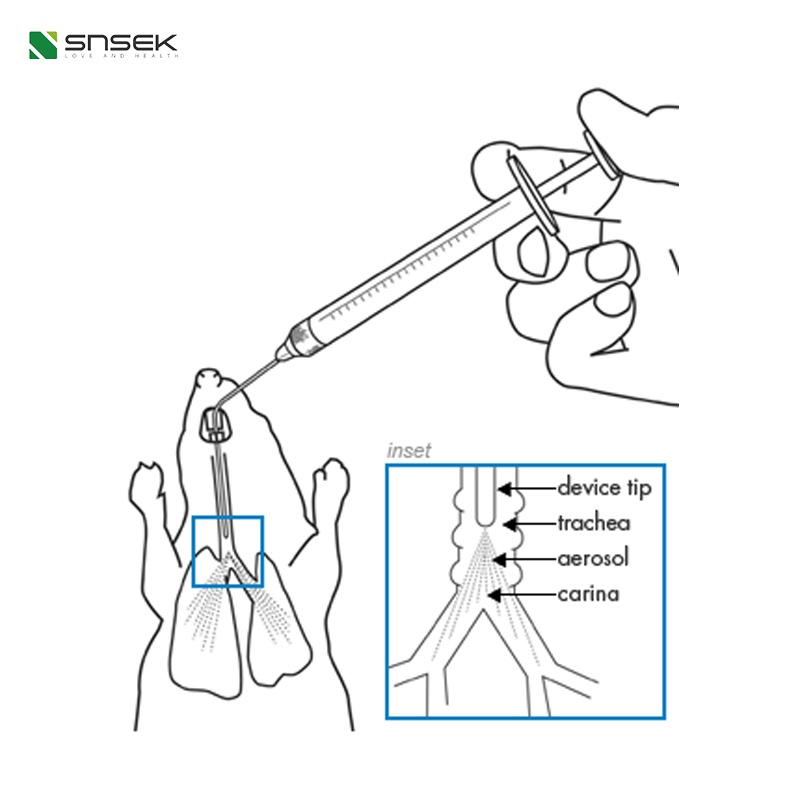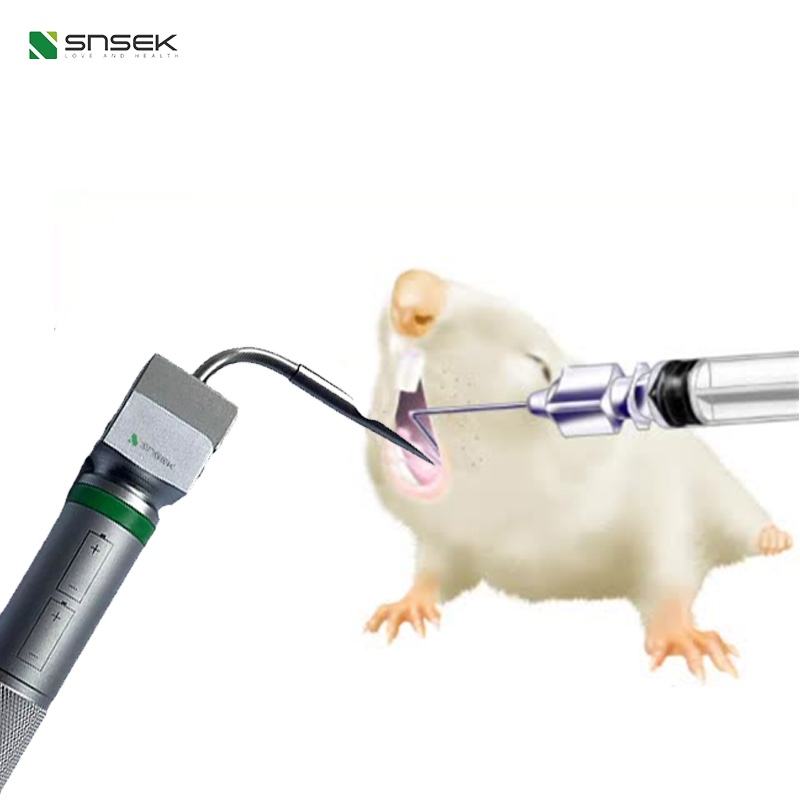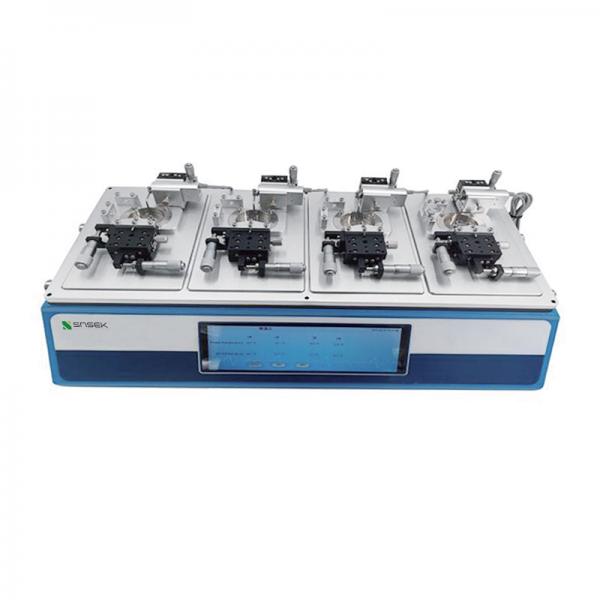Snsek-JYQ30012 Dry Powder Devices
- Product Item : Snsek-JYQ30012 Dry Powder Devices
- Category: Respiratory & Anesthesia Systems
Brand: Penncentury SNSEK
Model: JYQ30012/30010
The aerosol intratracheal drug delivery kit for rats and mice can deliver quantitative aerosols to the trachea and lungs of rats and mice, providing a better solution for quantitative drug delivery: quantitative aerosol atomization drug delivery directly to the lungs (trachea) of rats, mice, beagles, and monkeys, which is fast and easy to operate.
A device that can accurately perform intratracheal atomization drug delivery. The quantitative liquid can be atomized through the aerosol atomization micro-spray head integrated in the stainless steel capillary cannula, and the capillary cannula can penetrate the animal to the bronchial bifurcation to achieve quantitative atomization into aerosol drug delivery in the trachea. Compared with traditional oral or injection drug delivery, the drug can act directly on the lungs and is suitable for lung physiology, pathology, and pharmacology research.
Features:
1. Suitable for small animals such as mice, rats, guinea pigs, rabbits, etc., and can also be customized for large animals
2. Direct intratracheal administration, no first-pass elimination, small systemic effect of drugs
3. Micro-precise administration, minimum drug dosage 25μL (liquid)
4. Can be used for solution, small cell suspension, homogeneous suspension, low viscosity emulsion, dry powder, etc.
5. 90% of the drug atomization diameter ≤30μm (liquid), can reach the terminal bronchioles and even respiratory bronchioles, and can be evenly distributed in the lung tissue of mice and rats
6. Easy to use, safe and stable, made of stainless steel, strong, stable and corrosion-resistant
7. At least 30 high-impact factor SCI papers have been published, and at least 1 SCI paper with an IF greater than 35 points can be provided
8. The equipment has a CE certificate or EC certificate of conformity
9. It can be used in many fields such as inhalation toxicology, aerobiology, biohazard testing, inhalation immunity, inhalation therapy, drug research, environmental evaluation, hazard assessment and medical protection
Application areas:
1. Study the mechanism of pulmonary absorption: By administering labeled drugs, the absorption and transport process of drugs in the alveoli and interstitial lungs can be observed, and the absorption rate and degree of drugs in different parts such as alveoli and interstitial lungs can be accurately determined, thereby establishing a reliable drug absorption model.
2. Analysis of pulmonary metabolic processes: Using pulmonary administration technology, the formation and changes of drug metabolites in the lungs after administration can be detected, which helps analyze the activity and metabolic pathways of pulmonary metabolic enzymes, and can also analyze the metabolic dynamics of drugs in the lungs, including metabolic rate, formation and clearance of metabolites.
3. Evaluation of pulmonary clearance mechanism: Pulmonary administration can act on the lungs to study the effects of alveolar macrophages, pulmonary surfactant, ciliary movement, etc. on drug clearance.
4. Exploration of pulmonary immune response and barrier function: By administering immunostimulatory drugs in the lungs, the activation and inflammatory response of pulmonary immune cells can be observed. Using labeled particles or macromolecules as probes, the regulatory effect of barrier structures such as pulmonary vascular endothelium and epithelium on the permeability of substances can be evaluated.
5. Establish a pharmacokinetic model of pulmonary-systemic circulation: Through pulmonary administration data, a detailed pharmacokinetic model of pulmonary-plasma-systemic circulation can be established to more accurately predict the absorption, distribution, metabolism and clearance process of drugs in the body.
There are three models to choose from: rat-type intratracheal quantitative administration kit, mouse-type intratracheal quantitative administration kit, and large-unit intratracheal quantitative administration kit
Main features of intratracheal quantitative administration device:
· QUANTIFIABLE: quantitative aerosol is administered to the lungs of animals
· TIMED: administration can be performed at one or more time points
· EFFECTIVE: good aerosol absorption effect, fast administration, high efficiency, and easy operation
· CONVENIENCE: simple maintenance and easy operation
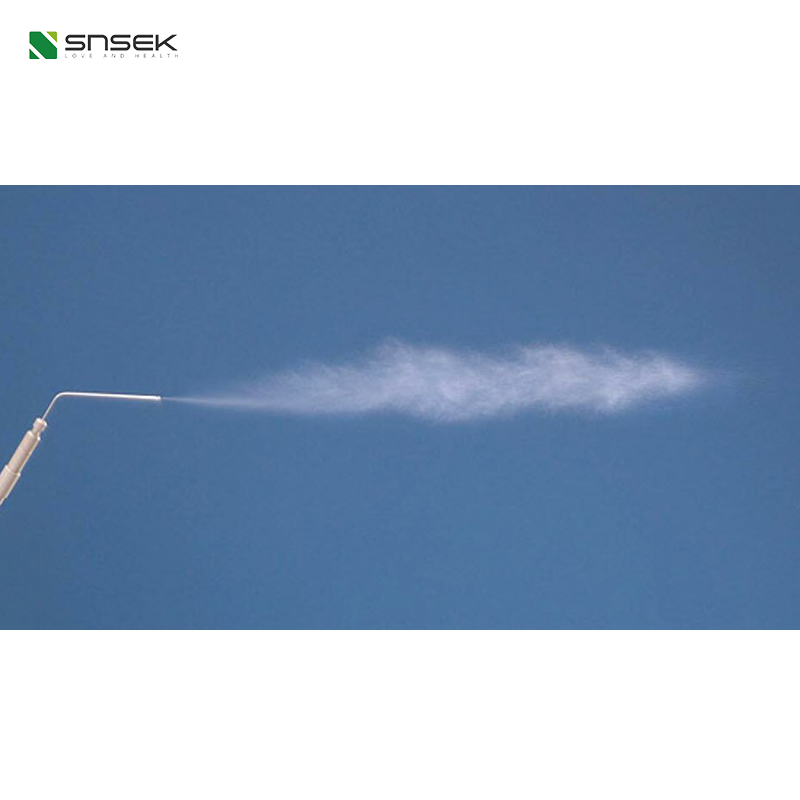

INQUIRY
CATEGORIES
LATEST NEWS
CONTACT US
Name: Jeff Chi
Mobile:+86 15151583697
Tel:+86 18762428717
Whatsapp:+86 18762428717
Email:info@snsek.com
Add:No.11 Tiyu Lane Yangshe Town Zhangjiagang City Suzhou City Jiangsu Province China

